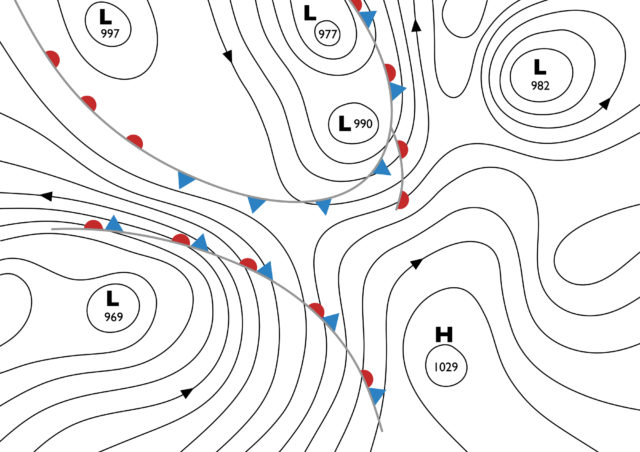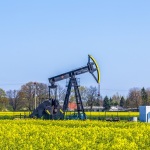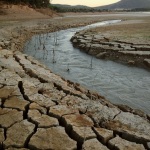
Regulatory science has been a key area of public interest in science and its application. With so much at stake in terms of public safety, and commercial success or failure depending on licensing products as safe or unsafe, it's becoming increasingly necessary for some STEM graduates to specialize in this area, to allow for technological advances while protecting people's health and serving the wider public interest.
What is Regulatory Science?
Put simply, Regulatory Science or Regulatory Affairs as they apply to science is the examination of the public effects of each technological advancement. It is the set of regulations, standards, rules and other legal issues relating to such public interest issues as environmental impact, effects on public health, safety in work and in using equipment as part of their job role. It can involve licensing (in the US, this is the responsibility of bodies such as the FDA (1)), safety checks on commonly used equipment in the workplace (the responsibility of OSHA here in the US) and the environmental impact of using such technology (the responsibility of the EPA).
It utilizes scientific investigation as an art (by examining qualitative impact, opinions and perception) and as a hard science (through statistics and other quantitative methods to explain in hard facts the precise level of impact).
- Regulatory affairs (2): This area of regulatory science deals with governmental responsibility for protecting public safety and ensuring collective health is not put in danger in the application of science. Typical areas include the FDA examining the side effects of new medication, and the effects of pesticides on food supply
- Regulatory writing (3): This is the process of analyzing data and writing reports for stakeholders such as government decision makers, regulators and others to make their decisions with as much information available as possible
- Risk Management (4): This area allows decision makers to make informed decisions by defining tangible and likely risks. Even if the regulatory side of an issue highlights potentially large consequences of something (for example, the meltdown of a nuclear power generator), the risk management side will define how likely it is (very low) and what should be done to minimize this risk
- Compliance, Regulation and Law (5): When producers of a scientific product or service that poses a public health or environmental risk are granted a license, or other permission to do so, they are expected to abide by regulations and standards to maintain safety. Inspectors carry out regular checks to ensure that these guidelines are followed. This can be industry or government enforced
The concept of regulatory science programs is to ensure that humans, society and the economy all benefit from technology and the applications of science while not being harmed by it.
The US Agencies Responsible for Regulatory Science, How and What They Impact
Many aspects of our lives that involve the application of science are dangerous. The materials we eject into the air as part of industrial processes, the vehicles we use to go about our daily lives, the food we eat, the air we breathe, substances we use in the workplace are all potential hazards. It is down to regulatory science agencies to determine which are intrinsically safe, which are safe so long as they are handled correctly and in safety, and which should be strictly regulated with limited access. The USA has many regulatory agencies covering most areas of daily life.
Occupational Safety and Health Administration
The Occupational Safety and Health Administration, also known as OSHA, is a division of the Department of Labor (DoL). Signed into law by Congress in December 1970 during the Nixon presidency, their mission was to enforce safety in the workplace, focusing on dangerous practices and health. It is the Agency responsible for creating new standards to reduce the number of workplace injuries and death and to ensure that employees are not exposed to unnecessary dangers.
The work of OSHA serves many areas of the workplace:
- To build awareness of the duty of care that employers have towards their employees including creating a safe workplace, explaining the nature of hazards at work and hazardous materials, provide training in unambiguous terms, keep records on risk and actual injuries
- Determining that protocols are being satisfied, not just on follow up after a workplace safety incident, but also in notifying the relevant authority (OSHA) in the right manner and at the right time
- Worker rights relating to workplace safety, to file a complaint with OSHA should an employee feel their safety is at risk, full disclosure on the employer's safety record and incidents of injury (including any medical information that their employer presently holds)
Its creation has been demonstrated a success. Since its inception, its saved many lives and prevented major and minor injuries; statistics suggest that such incidents have reduced by “more than half” (6) without damaging productivity or costs to business. OSHA regulations and the government that creates laws for OSHA to enforce covers employees in private and public organizations (including local, state and Federal government). Not covered are the self-employed, family of agricultural employees, and those workplaces covered by another Federal Agency - some of which are listed below.
Environmental Protection Agency
Although founded by President Nixon in 1970, its inevitable foundation built on almost a decade of environmental health movement beginning during the Kennedy presidency. The Clean Air Act is considered a landmark in the history of environmental public health in the USA. Its foundation came around the time that climate change began to develop as a major scientific paradigm. Its core reason for being has been one of attempting to regulate industry and daily lives to ensure that both human and environmental health are protected. In more recent decades, it has sought to impose regulations (set down in law) to limit and reduce carbon emissions from industries and our motor vehicles, the two things most responsible for climate change.
It carries out environmental assessments to ensure that laws are adhered to and that our air, water and land remain clean and safe for people and ecology, biodiversity at a local, national and global level. It works with state governments who, in some cases, are responsible for monitoring and looking out for those who violate standards, but its remit in regulatory science also includes:
- Routine research and investigation into environmental issues to ensure individuals and organizations operating within the borders of the US are adhering to the law
- Regulating laws concerning pollution and carbon emissions, and advising the Federal government on what is presently happening in the US
- Consulting with government bodies and engaging with industry to come to mutually agreeable outcomes
- Enforcement powers such as fines and jail times for those who violate laws on environmental protection
- A duty to maintaining public health, ecological balance and biodiversity, and conserving future landscapes and species from the effects of long-term damage of any anthropogenic acts that put these at risk
It has recently made it clear that its future development will include greater transparency to the public and to stakeholders (7).
Federal Drug Administration
Formed in 1906 as one of the first Regulatory Science bodies in the country, public perception is that this administrative body of the Federal government is concerned with licensing medications. This is true, but that is not its only remit. It's also responsible for food safety and dietary supplements, alcohol and tobacco regulation, vaccines and biopharmaceuticals, vet products and animal foods (pet and agricultural) and medical electronic equipment (8).
Every medicine or medical treatment we use comes with a degree of health risk. This can include side effects (few medications come without at least a long list of potential side effects flagged up during the research process), the potential consequences of overdose and long-term health damage. It is the responsibility of the FDA to weigh up all the evidence of a new drug to determine whether it may be licensed for treatments (1). Even after this, it maintains regulations and monitoring schemes on a quality control basis. Their primary responsibility to the American people is to protect citizens by applying rigorous science from way before a new drug goes to market and beyond its release.
Faced with a growing need for regulatory science, in 2011 during the Obama Administration it developed a strategic plan covering eight broad areas of priority; a ninth was added the following year:
- Modernize toxicology for improved product safety
- Stimulating innovation in personalized medicine and clinical evaluations
- Support and aid in developing new approaches to manufacturing and product quality
- Future-proofing the FDA against innovative technologies and methods
- Harnessing data through correct and relevant methods of collection
- New preventive methods on food safety
- Develop medically-based countermeasures to medical threats such as bioterrorism and epidemic diseases
- Help consumers, organizations and professionals make informed choices through utilizing behavioral science
Mine Safety and Health Administration
Mining is widely recognized as one of the world's most dangerous occupations and always has been. Mining for minerals such as fossil fuels, precious metals, everyday metals and minerals, radioactive materials and so on requires strict requirements on safety standards. That is where the MSHA comes in, to ensure that any mine operating within the borders, waters, or overseas territories of the USA adhere to safety regulations and law as determined by the Federal government (9). This can include the mine's engineering, rules on drilling and mining safety and associated safety issues, what to do in a leak or spill (though wider environmental damage caused by such an event is usually the responsibility of the Environmental Protection Agency) and employee rather than public safety.
They are responsible for enforcing the Federal Mine Safety and Health Act (1977) which concerns public and employee health during such operations and sets down standards for accident reporting, actions and consequences. They do this through regulatory science - an evidence-based approach to structure, ventilation, airflow, occupational safety, risk management and what to do in the event of an incident, in reducing deaths and injuries at this unique type of workplace. 1977, the year of their foundation, some 242 miners died. By 2015 that fell to 28.
Department of Energy
The DOE is the government department responsible for the domestic and international energy policy. It oversees nuclear energy production and the nation's nuclear arsenal, radioactive waste disposal and domestic energy production. However, it also has responsibilities at the other end of the scale - promoting, researching and developing renewable energy, promoting and encouraging energy security and conservation-related issues. Outside of energy, it oversees research into genomics and sponsors many programs in the physical sciences.
Its place in regulatory science began in 1975 with the Energy Policy and Conservation Act (10), building on some 15 years of pressure to begin a process of conservation and environmental awareness at the very heart of government. It set down Federal guidelines and standards on appliances and equipment relating to safety mostly. But with a global need to reduce carbon emissions, this has led to a shift towards energy efficiency in everyday appliances such as refrigerators and washing machines, bulbs and batteries, and anything else that might use energy from the national capacity. Today, many such appliances must also pass an energy conservation standard as well as safety protocols.
Rules are made through a multistep consultancy, through Congress with DOE consultancy, and sometimes seeking public opinion on issues. They may also look for industry input and consider waivers for when products are upgraded with new features and functions, consulting manufacturers in regulation.
Coast Guard
Perhaps not an area that springs to everybody's mind when looking at regulatory science in practice, but the US Coast Guard is responsible for many issues of public safety as well as its military remit. It began in 1790 when the US began to develop as a maritime power and is now the oldest maritime arm of any US government agency or body. Its responsibilities include assessing the economic and environmental impact of its decisions (expected under Federal law and enforced by the EPA), and regulations expected of the USCG (11).
Office for Civil Rights (for HIPAA)
This subdivision of Federal governmental Department of Education has a limited number of powers with regard to regulatory science. The most prominent is HIPAA - a law signed in by President Bill Clinton in 1996. It mandates rights on protecting the healthcare information of patients at clinics and hospitals, their insurance providers and any involved legal representative. While some of HIPAA's provisions concerns human action and attempts to mitigate human error and carelessness, there are regulatory data science implications too. Some of the provisions determine the nature and state of technology required to protect that data including details on computer systems and storage methods, data portability, permissions, encryption and access (12).
Consumer Product Safety Commission
Are the goods we purchase for our home, safe? Do they represent a fire risk, a danger to our children; are they toxic if swallowed or otherwise ingested? Are there environmental toxicology issues? It issues product recalls and refuses permission for sale if any product that any company wishes to sell in the US represents an unreasonable risk to health and safety. This was once the responsibility of state governments and industry, but this was seen as inadequate (13). It works with third parties extensively including family groups, consumer organizations and industry to ensure that we as consumers are making a safe choice for ourselves and for our families when we spend money on goods. They will take on board evidence from sciences such as toxicology, chemistry and biology to determine rules on use such as minimum age for sale or an outright ban. They use “citizen science”, reported data on safety issues and accumulate information before deciding a ruling, sharing their public knowledge and using it to regulate markets and sale. CPSC is considered one of the most scientifically rigorous of all Federal government organizations. When an industry have voluntarily agreed to a standard they tend to allow self-regulation; when the Federal government has made a law about product safety, they enforce it (for example, the sale of cigarettes.
Regulatory Science: The International Picture
Regulatory science and regulatory compliance until relatively recently have been considered as existing in isolation within each country. What the US does in terms of regulating and licensing products and medication had little bearing in Japan, the European Union, the Middle East or even our major markets in South America except for the international companies that operate within those jurisdictions. However, globalization has brought disparities and clashes into stark contrast and there is a need for change and cooperation. A globalized world requires, at least for simplicity, something resembling a potential harmony towards standards to assure that organizations who want to operate in multiple authorities may do so. This is not always the case in practice; while one country perceives something as safe or harmless, another may perceive the same practice or substance as unsafe or even harmful. One of the present issues is GM labelling - mandated in the US (14), voluntary in the EU (15). This could cause confusion for consumers, industry and international regulators.
There are areas where the adoption of regulatory science is or can prove useful, especially in the developing sciences. Regenerative medicine is one of those areas (16), a move which is especially welcome as the US, Japan and member states of the European Union are at loggerheads over what constitutes effective legislation and industry standards on regulation. The main reason for the differences concern the methods of health care available to citizens. Regulatory Science could prove key in bringing together a unified idea on how to approach this and other sciences. Even in medical science, regulatory science is never simple. If one medicine is licensed for use in one country it doesn't necessarily follow that others will license it for use too. This has been problematic since the 1990s when regulatory science began its process of internationalization (17).
One of the great regulatory science success stories comes through the United Nations bodies. Organizations such as the IMO (International Maritime Organization) which sets down legal criteria on such things as shipping which covers environmental issues as well as shipping safety as a workplace and safe practices. Similarly, the International Civil Aviation Organization performs similar functions for aviation. Thirdly, the legal international framework centering on nuclear weapons and use of chemical and biological weapons through the Organization for the Prohibition of Chemical Weapons.
Regulatory Science in the US: The Major Milestones
Regulatory Science is a relatively new area, blending applied and research science with government policy and their public health responsibilities. Many argue that it began in the 1970s with a large number of regulatory bodies forming to cope with public concern and growing evidence of how practices could potentially harm both people and ecosystems.
1800s: Arguably the first threads of Regulatory Science in the pharmaceutical industry. It was the end of the Enlightenment era and public health was changing. Modern pharmaceuticals as we know it began here. It required the regulation of drugs (18) with standards set down on treatments and doses even though these may have been fairly rudimentary and much looser by today's standards. This became tighter through the century until the 1848 Import Drugs Act which required standards of purity and strength.
1906: This was the year of the Federal Food and Drugs Act which would eventually lead to the creation of the FDA, the body now responsible for medication and food licensing. That would come to be in 1930 but the FDA claims, thanks to the new powers and the reorganization of existing authorities, it was born in 1906.
1950s: By the time of the modern age, old standards were proving inadequate. This decade saw several vaccine and medication tragedies with Thalidomide being the most prominent. The developed world was forced, once again, to look at regulating medical treatments to ensure that events such as the Vaccine Tragedy and Thalidomide could never happen again.
1962: The publication of Rachel Carson's book Silent Spring forces the US and indeed the world to consider the potential harms of a lack of scientific regulation in industrial agriculture and to think about the potential harm we could do to our planet. Despite coming under attack from several industries, she won the support of the Kennedy administration (19). But regulation would take several years and carry on beyond Kennedy's assassination.
1964: The Helsinki Declaration set down a series of ethical standards regarding human experimentation for medication. Developed by the World Medical Association it is now considered the most important piece of global regulation on research ethics. However, it is not legally binding on any nation but it is an important cornerstone for medical licensing and other regulations for the individual countries legal framework (21).
1969-70: Foundation of the Environmental Protection Agency in 1970 followed several years of consultation. Just the previous year, the National Environmental Policy Act which required all Federal Agencies to prepare an environmental impact assessment if they were planning any actions that could impact an environment (20, p2). However, it must be noted that the framework for assessing an environmental impact yet existed. 1970 was a period of the birth of environmental science and so the tools and methods were young, as was the concept of ecology and the importance of equilibrium in an ecosystem.
1971: The foundation of OSHA, the Occupational Safety and Health Administration under the jurisdiction of the Department of Labor after being signed into law by President Nixon in 1970. Finally, American workers would receive safety protection and a duty of care from their employers. Its immediate aim was to reduce the number of workplace deaths and injuries without affecting productivity or profitability (6). Employers are subject to ongoing review and changes in the law. In recent years, OSHA has required improved standards on electrical protection equipment, emergency routes and action plans in the case of fire and much more. OSHA uses the scientific method to determine safe working levels of chemical substances, determining which materials to use in PPE and medical science standards on such issues as safe lifting.
1972: Alvin Weinberg writes a seminal paper on “trans-science”. Although credited with effectively creating Regulatory Science, there are many detractors to this claim. He never uses the term “Regulatory Science” and was speaking in general terms about things that science could prove but questions that were unanswerable. What he effectively did was create a solid framework for the development of using science in public decision making (20, p3).
1987: This is the year that the term Regulatory Science is first used. In a paper in that year, Sheila Jasanoff discusses “policy-relevant science” (20, p3). She is now considered one of the founders of the movement of regulatory science and, indeed, coined the term in 1990 in her follow up book. In reality, however, it had been nearly two decades since governments began to expect science to determine some matters of public policy.
1996: The introduction of HIPAA in that year finally brought regulatory science out of the realms of personal safety and into the world of the growing concern of data. This was the birth of the internet and already, people and government were concerned about who could collect what sensitive data. As well as determining the what could be held, who could hold it and who could access it, HIPAA also uses information science to set down criteria for data protection and encryption (22).
2011: It was inevitable that Regulatory Science would become a matter of global interest. Globalization was, by 2011, at least a decade old. That meant organizations wishing to trade internationally would need to ensure they adhered to requirements in every jurisdiction. The Global Summit on Regulatory Science began in 2011 to help find solutions to regulatory issues. They discuss medical science issues, food safety and public health, but also developing technologies for which there may not yet be a framework such as nanotechnology (23).
2015: Unlike the Kyoto Protocol, The Paris Agreement of this year attempted to set down, using our understanding of the modern findings of the environmental sciences, a binding set of procedures -to do something about global greenhouse emissions (24). Although it did not determine what each of those would be for each country (it allows individual autonomy), it did agree to set a maximum temperature rise of 2C for the remainder of the century. To many this is unenforceable especially when the requirements are so loose. However, it is the most solid agreement to date that uses science to determine a set of standards for a voluntary arrangement. Future decisions may be legally binding.
Future Challenges for Regulatory Science and Compliance
As you can see from the history of Regulatory Science, most of the issues that have come up in its short history (and before there even was such a thing as Regulatory Science) have been subject to reaction rather than a proactive approach. Most regulations are passed through various governments as a result of a problem arising rather than a problem foreseen. That situation is unlikely to change as industries grow ever more complex and new technologies arise with unforeseen problems. Here are the present and future challenges for Regulatory Science.
Data Science, Big Data, and GDPR
The internet has been around (as a public medium) for around 25 years. In that time, access speeds and the types of media we use on it has changed rapidly. We can now store and transfer more data than ever before. In this age of Big Data as a marketing and research tool, governments and individuals are starting to ask questions about the volume of data that third-party organizations hold about each of us, it's inherent value, and whether we even want them to use and handle it. In May 2018, the European Union instigated something called GDPR - General Data Protection Regulation. It doesn't just apply to the EU's member states (25). Any organization that handles data of any EU citizen is now required to abide by its regulation and that potentially has massive implications for how businesses and public organizations here in the US handles such data.
There is no plan at present for the US to introduce anything like GDPR, but this administration and the next will almost certainly be watching developments in the European Union for the time being to ascertain whether:
- GDPR is robust in protecting consumer rights while simplifying standards for organizations
- Whether or not it hinders or helps data commerce
- The potential future implications for such a regulatory science framework here in the US and for global data trade
- The implications for such a regulation on science research, particularly for biomedicine (26) and medical science research (27)
“Harmonization and Convergence”: Managing Competing Ideas
We live in a global world and for researchers and private organizations, that often means managing competing approaches to regulatory science all over the world. Medicine or treatment that may be legal in the US may have been refused a license in the EU or vice versa (28). Chemicals or other raw materials used in biomedical research, for example, may be perfectly legal in one jurisdiction and not in another. Yet global cooperation can benefit large-scale and international research programs. In this case, the challenge for regulatory science is to ensure that the new technological developments of the future may do so with as little restriction or regulation as possible and to work together on both national and international frameworks to save jobs while adhering to local customs and laws. Due to the global market and the ease with which such cooperation may take place with lower trade barriers and the realization of mutual benefit, many research sectors are taking steps towards regulatory convergence (28).
There is a current major disagreement between the US and the EU regarding restrictions on GM. The latter has some of the strictest regulations regarding GM in food and feed in the world; the US feels that the regulations are unscientific and are designed not so much to appease a concerned public, but as a form of trade protectionism (35). Another issue of potential conflict is whether any organization may patent a certain modified gene as intellectual copyright.
Public Safety vs Economics
Public safety has always been paramount for regulatory science. The EPA, OSHA and FDA were all formed with protecting citizens and ensuring public safety in mind (29). While industries continue to push the boundaries of technology and pharmaceutical development, it will continue to be down to regulating bodies and the governments that establish, support, and fund them to ensure that they do so within the boundaries of the law. As new issues come to light, new problems and new challenges, the constant need for vigilance and adaptation will remain. So long as regulators continue to understand their vital role in protecting public health and ensuring their safety, there should not be a problem. But some concerns have been raised that economics and business interests have been allowed authority over public health.
Certainly, this is the accusation placed at the feet of many global governments in failure to act regarding threats to public health of climate change. Drought, flooding, increasingly erratic weather patterns, the unpredictability of previous generally predictable weather phenomena and extreme weather as the new normal, and the spread of tropical diseases outside of their conventional habitats certainly qualify as public safety issues. As the century goes on, the western world is expecting the number of refugees to increase from those areas most at risk from food insecurity and political instability where the causes are related to changing climate - these are “climate refugees”. The IPCC has always sought to instigate regulation based on scientific evidence as a form of anticipatory step rather than the conventional reactionary system of regulatory science (30). Encouraging governments to switch from a reactionary to a proactive method of regulatory science could be one of the biggest challenges of the remainder of the century.
The Double-Edged Sword of Public Opinion
Public reporting has been a boon to research and public health. Often, instances of sickness and side effects come through self-reported symptoms or effects as a form of “citizen science” and inclusiveness will continue to be an important method of both outreach and data acquisition (31). However, what can be a great asset to research can also be a distraction at best or an anti-science movement at worst. A misinformed public not subject to the mindfulness of potential problems such as confirmation bias, the confusion between correlation and causation, and even the willingness to believe in conspiracy theories can lead to media scare stories. This is certainly the case for issues such as the belief that vaccines cause autism and that GM is dangerous to public health. In the first case, multiple repeated studies have shown no link between vaccines and autism. In the second, public pressure has led to food producers here in the US to put NON-GMO on their products to prove they are “safer” than GM which has proven in thousands of articles, to be no more or less dangerous than conventionally grown crops (32). The same fear has led to the EU banning GM in food for human consumption.
Issues such as public pressure can be a problem for regulators and for the governments that fund and support such bodies. as they can waste time bowing to public pressure on safety issues instead of going with the science. Regulatory science runs the risk of reacting to the wrong problems and legitimizing or enabling public concerns that are based purely on a misunderstanding. This can be both resource and cost intensive.
Misleading Food Labels
Public misinformation and lack of understanding of science can also create a problem for the public outreach of science in any area (33). It is important that food producers especially do not mislead the public. While they cannot make claims that are untrue (and will be penalized by the FDA for doing so) there is a further problem when food labels mislead the public by implication. Here, they are not technically lying, but creating a perception through suggestion. For example, using words such as “natural” implies a certain product is somehow healthier and safer than its competitors. The reality is that the word “natural” has no legal definition. Negotiating the minefield of misleading claims such as gluten-free organic water (34) can prove problematic in that although the producer is not lying about their product (which is against the law) it is that, by implication, their product has these values while others do not. Marketing gimmicks are increasingly misleading and while the various regulatory science bodies have been concerned in the past with protecting public health, their remit in many cases also covers public interest. Arguably, challenging nonsensical claims and marketing tactics designed to create confusion in a “knowledge gap” for the consumer is likely to be a major challenge going forward.
Sources
- https://www.fda.gov/ScienceResearch/SpecialTopics/RegulatoryScience/ucm267719.htm
- https://www.topra.org/TOPRA/TOPRA_Member/What_is_regulatory_affairs.aspx
- https://www.quanticate.com/blog/bid/42720/regulatory-writing-an-integral-part-of-clinical-research
- https://www.researchgate.net/publication/304806325_The_Regulatory_Science_and_Politics_of_Risk_Management_Who_Is_Being_Protected
- https://www.int-comp.org/careers/a-career-in-compliance/what-is-compliance/
- https://www.epa.gov/osa/strengthening-transparency-regulatory-science
- https://www.fda.gov/AboutFDA/WhatWeDo/
- https://www.msha.gov/about/mission
- https://www.energy.gov/eere/buildings/regulatory-processes
- https://www.dco.uscg.mil/Our-Organization/Assistant-Commandant-for-Prevention-Policy-CG-5P/Commercial-Regulations-standards-CG-5PS/Office-of-Standards-Evaluation-and-Development/Standards-Evaluation-Analysis-Division/
- https://www.hipaajournal.com/hipaa-encryption-requirements/
- https://www.law.cornell.edu/uscode/text/15/2051
- http://www.sciencemag.org/news/2016/07/us-senate-passes-gm-food-labeling-bill
- https://ec.europa.eu/food/plant/gmo/traceability_labelling_en
- http://journals.sagepub.com/doi/abs/10.1177/2168479016650716
- https://www.ncbi.nlm.nih.gov/pubmed/12269340
- https://www.omicsonline.org/open-access/historical-overview-of-pharmaceutical-industry-and-drug-regulatory-affairs-2167-7689.S11-002.pdf
- http://www.environmentandsociety.org/exhibitions/silent-spring/us-federal-government-responds
- http://cont.o.oo7.jp/39_1/p167-80eng.pdf
- https://www.wma.net/policies-post/wma-declaration-of-helsinki-ethical-principles-for-medical-research-involving-human-subjects/
- https://www.hipaajournal.com/hipaa-encryption-requirements/
- https://www.fda.gov/downloads/AboutFDA/CentersOffices/OC/OfficeofScientificandMedicalPrograms/NCTR/WhatWeDo/UCM515514.pdf
- https://www.c2es.org/content/paris-climate-agreement-qa/
- http://science.sciencemag.org/content/360/6388/496.full
- http://science.sciencemag.org/content/360/6388/496.full
- https://www.ncbi.nlm.nih.gov/pmc/articles/PMC5243137/
- https://www.fda.gov/BiologicsBloodVaccines/InternationalActivities/ucm271079.htm
- https://www.sciencedirect.com/science/article/pii/S1607551X12001507
- https://www.nature.com/articles/nclimate3264?WT.feed_name=subjects_scientific-community
- https://wellcome.ac.uk/sites/default/files/wtd003419_0.pdf
- https://gmoanswers.com/sites/default/files/610%20papers%20on%20the%20safety%20of%20GMO%20in%20foods%207-2013.pdf
- https://theconversation.com/gluten-free-water-shows-absurdity-of-trend-in-labeling-whats-absent-80657
- https://www.sciencedirect.com/science/article/pii/S0168945209003112
- Guide to Parasitology - November 19, 2018
- Deserts as Ecosystems and Why They Need Protecting - November 19, 2018
- Conservation: History and Future - September 14, 2018
Related Articles
Featured Article

Climatology: The Science of Global Weather Systems over the Long Term





